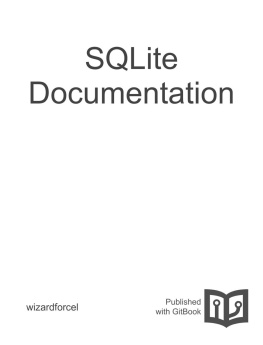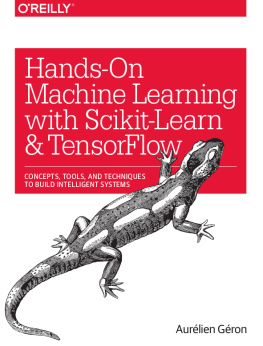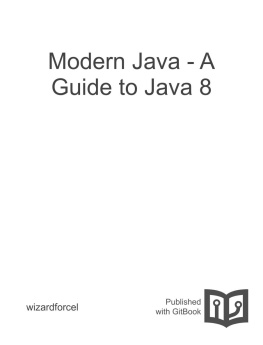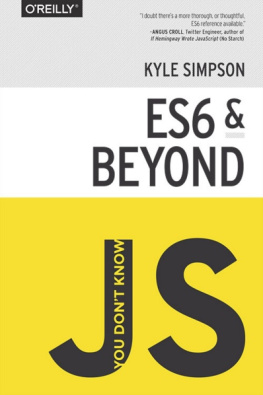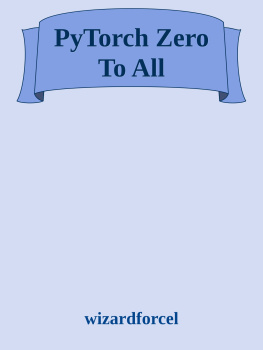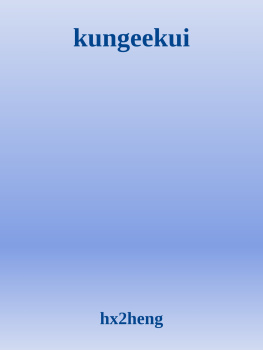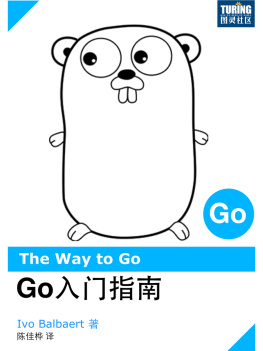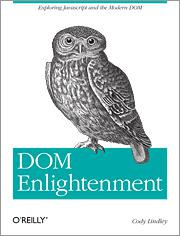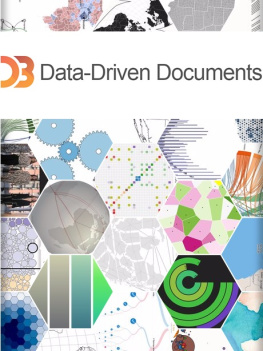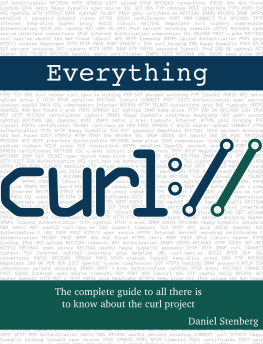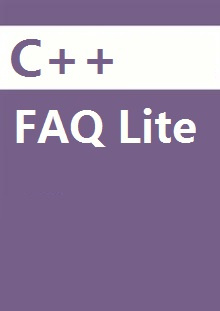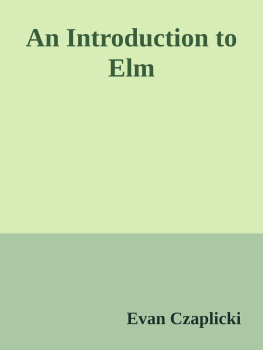it-ebooks - 500 Lines or Less
Here you can read online it-ebooks - 500 Lines or Less full text of the book (entire story) in english for free. Download pdf and epub, get meaning, cover and reviews about this ebook. year: 2016, publisher: iBooker it-ebooks, genre: Home and family. Description of the work, (preface) as well as reviews are available. Best literature library LitArk.com created for fans of good reading and offers a wide selection of genres:
Romance novel
Science fiction
Adventure
Detective
Science
History
Home and family
Prose
Art
Politics
Computer
Non-fiction
Religion
Business
Children
Humor
Choose a favorite category and find really read worthwhile books. Enjoy immersion in the world of imagination, feel the emotions of the characters or learn something new for yourself, make an fascinating discovery.
- Book:500 Lines or Less
- Author:
- Publisher:iBooker it-ebooks
- Genre:
- Year:2016
- Rating:5 / 5
- Favourites:Add to favourites
- Your mark:
- 100
- 1
- 2
- 3
- 4
- 5
500 Lines or Less: summary, description and annotation
We offer to read an annotation, description, summary or preface (depends on what the author of the book "500 Lines or Less" wrote himself). If you haven't found the necessary information about the book — write in the comments, we will try to find it.
500 Lines or Less — read online for free the complete book (whole text) full work
Below is the text of the book, divided by pages. System saving the place of the last page read, allows you to conveniently read the book "500 Lines or Less" online for free, without having to search again every time where you left off. Put a bookmark, and you can go to the page where you finished reading at any time.
Font size:
Interval:
Bookmark:

This is the fourth volume in the Architecture of Open Source Applicationsseries, and the first to not feature the words "open source applications"anywhere in the title.
The first three volumes in the series were about big problems that big programshave to solve. For an engineer who is early in their career, it may be achallenge to understand and build upon programs that are much bigger than afew thousand lines of code, so, while big problems can be interesting toread about, they can also be challenging to learn from.
500 Lines or Less focuses on the design decisions that programmers makein the small when they are building something new. The programs you will read aboutin this book were all written from scratch for this purpose (although severalof them were inspired by larger projects that the authors had worked on previously).
Before reading each chapter, we encourage you to first think abouthow you might solve the problem. What design considerationsor constraints do you think the author is going to consider important? Whatabstractions do you expect to see? How do you think the problem is going to be decomposed?Then, when reading the chapter, try to identify what surprised you. It is ourhope that you will learn more by doing this than by simply reading through eachchapter from beginning to end.
Writing a useful program in fewer than 500 lines of source code---withoutresorting to cheap tricks---is a challenging exercise in itself; writing one tobe read for pedagogical purposes when neatly rendered in a printed book is eventougher. As such, the editors have occasionally taken liberties with some ofthe source formatting when porting it into the book. The original source foreach chapter can be found in the code subdirectory of its project folder.
We hope that the experiences of the authors in this book will help you grow outof your comfort zone in your own programming practice.
---Michael DiBernardo
Michael DiBernardo (editorial): Michael DiBernardo is an engineer and director of delivery at Wave, and a past PyCon Canada chair. He writes at mikedebo.ca.
Amy Brown (editorial): Amy Brown is a freelance editor based in Toronto. She specializes in science and academic editing, and working with self-publishing authors. She co-edited the Architecture of Open Source Applications books with Greg Wilson.
Dethe Elza (Blockcode): Dethe is a geek dad, aesthetic programmer, mentor, and creator of the Waterbear visual programming tool. He co-hosts the Vancouver Maker Education Salons and wants to fill the world with robotic origami rabbits.
Malini Das (CI): Malini is a software engineer who is passionate about developing quickly (but safely!), and solving cross-functional problems. She has worked at Mozilla as a tools engineer and is currently honing her skills at Twitch.
Dustin J. Mitchell (Cluster): Dustin is an open source software developer and release engineer at Mozilla. He has worked on projects as varied as a host configuration system in Puppet, a Flask-based web framework, unit tests for firewall configurations, and a continuous integration framework in Twisted Python.
Daniel Rocco (Contingent): Daniel loves Python, coffee, craft, stout, object and system design, bourbon, teaching, trees, and Latin guitar. Thrilled that he gets to write Python for a living, he is always on the lookout for opportunities to learn from others in the community, and to contribute by sharing knowledge. He is a frequent speaker at PyAtl on introductory topics, testing, design, and shiny things; he loves seeing the spark of delight in people's eyes when someone shares a surprising or beautiful idea. Daniel lives in Atlanta with a microbiologist and four aspiring rocketeers.
Brandon Rhodes (Contingent): Brandon Rhodes started using Python in the late 1990s, and for 17 years has maintained the PyEphem library for amateur astronomers. He works at Dropbox, has taught Python programming courses for corporate clients, consulted on projects like the New England Wildflower Society's "Go Botany" Django site, and will be the chair of the PyCon conference in 2016 and 2017. Brandon believes that well-written code is a form of literature, that beautifully formatted code is a work of graphic design, and that correct code is one of the most transparent forms of thought.
A. Jesse Jiryu Davis (Crawler): Jesse is a staff engineer at MongoDB in New York. He wrote Motor, the async MongoDB Python driver, and he is the lead developer of the MongoDB C Driver and a member of the PyMongo team. He contributes to asyncio and Tornado. He writes at emptysqua.re.
Guido van Rossum (Crawler): Guido is the creator of Python, one of the major programming languages on and off the web. The Python community refers to him as the BDFL (Benevolent Dictator For Life), a title straight from a Monty Python skit.
Dann Toliver (Dagoba): Dann enjoys building things, like programming languages, databases, distributed systems, communities of smart friendly humans, and pony castles with his two-year-old.
Taavi Burns (DBDB): As the newest bass (and sometimes tenor) in Countermeasure, Taavi strives to break the mould... sometimes just by ignoring its existence. This is certainly true through the diversity of workplaces in his career: IBM (doing C and Perl), FreshBooks (all the things), Points.com (doing Python), and now at PagerDuty (doing Scala). Aside from thatwhen not gliding along on his Brompton folding bikeyou might find him playing Minecraft with his son or engaging in parkour (or rock climbing, or other adventures) with his wife. He knits continental.
Leo Zovic: Leo (better known online as inaimathi) is a recovering graphic designer who has professionally written Scheme, Common Lisp, Erlang, Javascript, Haskell, Clojure, Go, Python, PHP and C. He currently blogs about programming, plays board games and works at a Ruby-based startup in Toronto, Ontario.
Dr. Christian Muise (Flow shop): Dr. Muise is a Research Fellow with the Model-based Embedded and Robotic Systems group at MIT's Computer Science and Artificial Intelligence Laboratory. He is interested in a variety of topics including AI, data-driven projects, mapping, graph theory, and data visualization, as well as Celtic music, carving, soccer, and coffee.
Yoav Rubin (CircleDB): Yoav is a Senior Software Engineer at Microsoft, and prior to that was a Research Staff Member and a Master Inventor at IBM Research. He works now in the domain of data security in the cloud, and in the past his work focused on developing cloud- or web-based development environments. Yoav holds an MSc in Medical Research in the field of Neuroscience and BSc in Information Systems Engineering.
Cate Huston (Image filters): Cate is a developer and entrepreneur focused on mobile. Shes lived and worked in the UK, Australia, Canada, China and the United States, as an engineer at Google, an Extreme Blue intern at IBM, and a ski instructor. Cate speaks internationally on mobile development, and her writing has been published on sites as varied as Lifehacker, The Daily Beast, The Eloquent Woman and Model View Culture. She co-curates Technically Speaking, blogs at Accidentally in Code and is @catehstn on Twitter.
Allison Kaptur (Interpreter): Allison is an engineer at Dropbox, where she helps maintain one of the largest networks of Python clients in the world. Before Dropbox, she was a facilitator at the Recurse Center, a writers' retreat for programmers in New York. She's spoken at PyCon North America about Python internals, and loves weird bugs.
Next pageFont size:
Interval:
Bookmark:
Similar books «500 Lines or Less»
Look at similar books to 500 Lines or Less. We have selected literature similar in name and meaning in the hope of providing readers with more options to find new, interesting, not yet read works.
Discussion, reviews of the book 500 Lines or Less and just readers' own opinions. Leave your comments, write what you think about the work, its meaning or the main characters. Specify what exactly you liked and what you didn't like, and why you think so.




